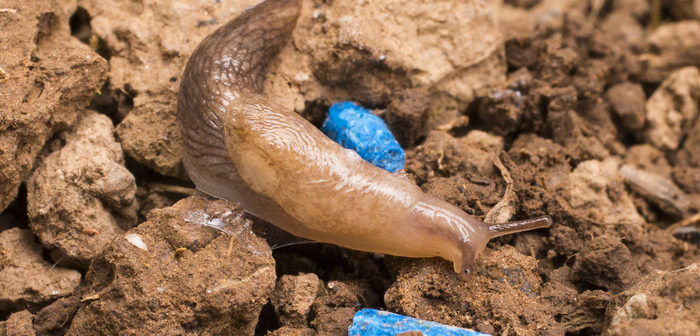Cereal growers must be extra vigilant to protect newly sown cereal crops from very high numbers of slugs this autumn. Populations have increased significantly after a wet summer and for many, continued moist conditions throughout September, a stark contrast to the past two years, warns Hutchinsons technical manager Dick Neale.
“Continuous growth, breeding and egg laying, along with rapid volunteer growth and catch and cover crops have all combined to generate a significant population in almost all situations, not just after winter oilseed rape.”
Such high numbers make control more challenging and require extra vigilance from growers and agronomists, especially in those crucial early stages of establishment, Mr Neale suggests.
“At emergence just a few minutes feeding on an individual seed or seedling can destroy the plant, while post-emergence the above ground leaves can tolerate far more grazing and still survive.
“Ultimately, we will never control slugs,” he continues. “The objective is to reduce the feeding population sufficiently to allow the newly sown crop to establish successfully.”
With this in mind, Mr Neale highlights five steps growers can take to help manage the risks from high slug populations this autumn:
Consolidate seedbeds
Ensuring seedbeds are firm and well consolidated as it makes it harder for them to move around and reduces the number of safe resting places compared with cloddy soils. Doing so also improves seed-to-soil contact, which will help crops establish faster and grow past the most susceptible stage for slug damage.
Monitor crops
With such high numbers of slugs present in many fields, it is vital to check newly sown crops frequently – possibly daily – to look for signs of damage, assess slug activity, and decide on pelleting requirements. Leave it too long between inspections and there may be no crop left to protect.
Remember, ferric phosphate pellets work completely differently to metaldehyde, as slugs feed and crawl off into the soil to die, so are not visible on the soil surface. This can make it harder to assess the effectiveness of pelleting strategies, other than through a reduction in crop damage, or the fact that all applied pellets have been eaten.
Ensure sufficient baiting points
Slugs are generally random feeders, so with higher populations, it is imperative that there are sufficient baiting points per square metre to increase the chances of slugs finding a pellet before the crop. In wet years like this, slugs can number in the 100’s per square metre, so a single application of 40-50, or even 90, pellets may not be enough.
Repeat applications
Equally, where pellets are being consumed very quickly, repeat applications may be necessary in order to maintain sufficient baiting points throughout the crop’s most vulnerable stage. Label restrictions vary, but many products cannot be reapplied within one week, so if a repeat application is needed before that, then products will have to be alternated.
Choose pellets wisely
In continuously wet conditions and spells of frequent rainfall, pasta-based pellets are more resilient than dry or steam-processed pellets. Recommended doses and the number of baiting points that dose will deliver do vary though, so consider options carefully. Some products also have limits on the number of applications that can be used, so always check the label carefully and consult your agronomist.




